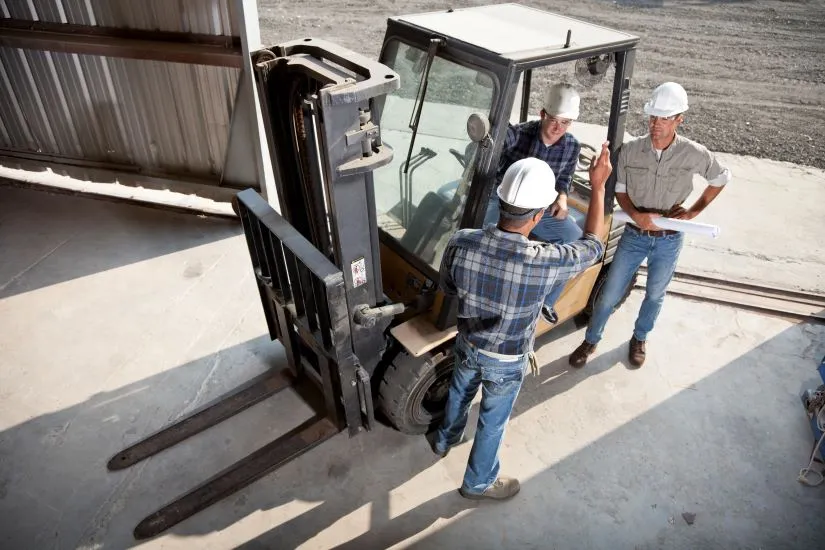The VelocityEHS Blog series on OSHA’s Top 10 Most Frequently Cited Standards continues! We’ve reached #5 on the list, the Powered Industrial Truck (PIT) Standard, relating to the proper use of powered industrial trucks (mostly known as forklifts). This Standard is required for workplaces, but more deeply, it supports a culture of safety within the workplace, where employees understand and respect the risks associated with powered industrial trucks.
An Overview of OSHA’s Powered Industrial Truck Standard
OSHA’s Powered Industrial Truck Standard, found under 29 CFR 1910.178, lays out a detailed framework for the safe operation of powered industrial trucks, commonly referred to as forklifts, pallet jacks, or similar equipment. The standard encompasses a wide range of topics, including operator training and certification, equipment inspection and maintenance, and safety measures for the handling of materials.
Forklifts can seem like a simple piece of warehouse equipment—you push the lever up, you go forward; you push the lever down, you go backward.
Until you spin around a corner too fast and lose your balance; or you’re carrying a load that’s too heavy for that PIT; or someone wearing headphones walks into your path and you’re going too fast to brake in time; or you speed into an undesignated area, right into the OSHA inspector who decided to drop by.
PITs can seem simple enough once you get comfortable around them, but there’s a reason that OSHA has a standard requirement for them. They’re powered, industrial trucks—no matter the size or use, they’re powerful pieces of equipment that can create a lot of damage and put people’s safety at risk.
OSHA’s Requirements for Powered Industrial Trucks
Like all OSHA standards, there are some elements to this that are very specific, so what we’ve included below is an overview of the main themes of the Powered Industrial Truck Standard.
All new powered industrial trucks acquired and used by an employer must:
- Meet the design and construction requirements for powered industrial trucks established in the “American National Standard for Powered Industrial Trucks, Part II, ANSI B56.1-1969”…. except for vehicles intended primarily for earth moving or over-the-road hauling.
- Bear a label or some identifying mark indicating approval by the testing laboratory. All nameplates and markings are in place and maintained in legible condition.
- Not perform modifications and/or additions which affect capacity and safe operation without manufacturer’s prior written approval. Capacity, operation, and maintenance instruction plates, tags, or decals must be changed accordingly.
- If the truck is equipped with front-end attachments other than factory installed attachments, the user shall request that the truck be marked to identify the attachments and show the approximate weight of the truck and attachment combination at maximum elevation with load laterally centered.
Within the Standard, OSHA notes 11 different designations of industrial trucks or tractors, with their own standards (D, DS, DY, E, ES, EE, EX, G, GS, LP, and LPS) as well as designations as to where those PITs can be used.
While of course important, these parts of the standard get very detailed, and we’re going to keep this blog post at a high level, so please take a moment to review these if your work involves powered industrial trucks.
Common Sources of Violations of the Powered Industrial Truck Standard
OSHA’s standards are legally binding, and failure to comply with them can result in serious consequences for employers.
Common violations of this standard occur:
In “typical” places, such as PITs having incomplete, illegible or incorrect label information.
Using non-designated PITs in non-designated locations in non-designated ways.
- Being reckless with or misusing PITs such as driving too fast
- Carrying unsupported loads or loads that are over the PIT’s weight limit
Not having the proper education and training on PITs for employees.
- Having incomplete, incorrect or a total lack of training procedures or records.
- Having unqualified personnel delivering PIT training.
The Costs of Powered Industrial Truck Violations
OSHA’s own page shares that current violations are $15,625 per violation, and with 1,896 violations of the PIT standard in 2022, that’s equal to $29,625,000. With a 35% increase in violations during 2023 (2,561) these costs go up over 10 million dollars equaling $40,015,625.
Businesses that prioritize OSHA’s guidelines on powered industrial trucks reap the benefits of a safer, more efficient workplace, while also avoiding legal and financial pitfalls. In the end, the importance of OSHA’s Powered Industrial Truck Standard cannot be overstated, as it serves as a cornerstone for both the well-being of workers and the success of enterprises across various industries.
OSHA’s Powered Industrial Truck Standard is not just a set of regulations; it is a lifeline for the safety, efficiency, and success of workplaces that utilize powered industrial trucks. By promoting safety, preventing property damage, enhancing productivity, ensuring regulatory compliance, and emphasizing education and training, this standard plays a crucial role in creating a secure and prosperous work environment.
